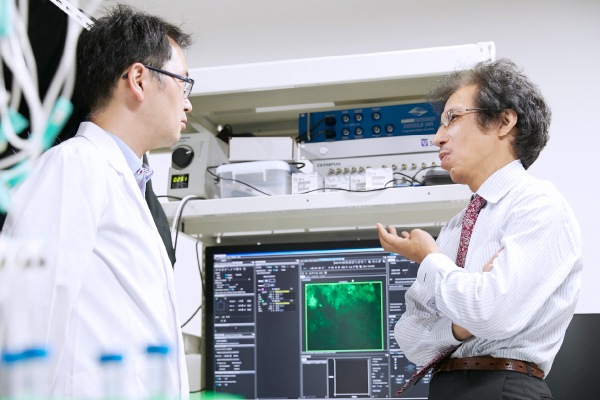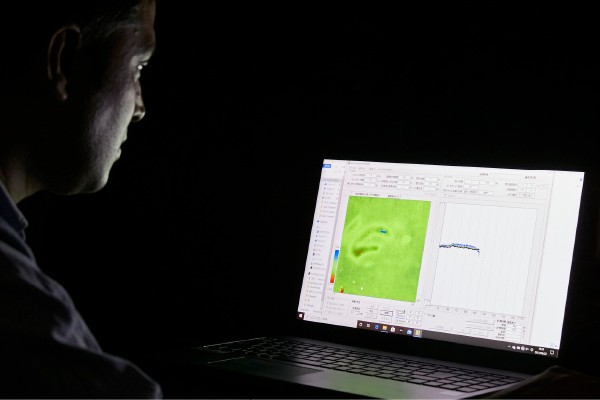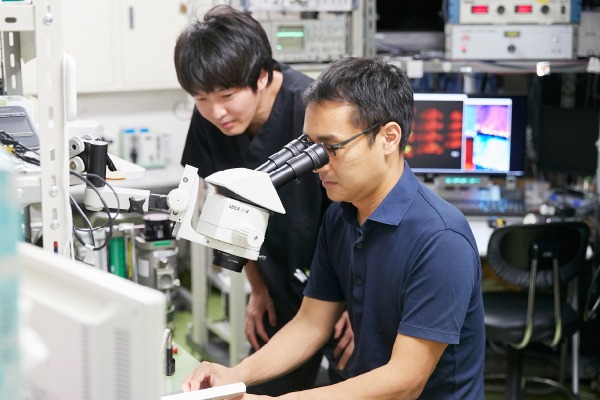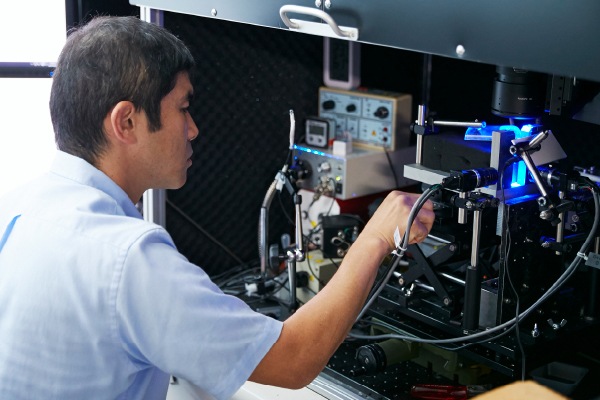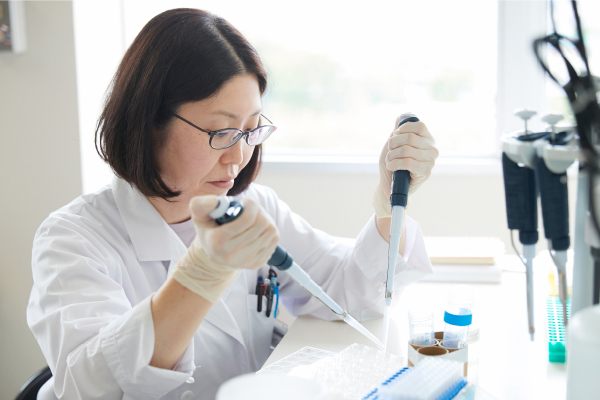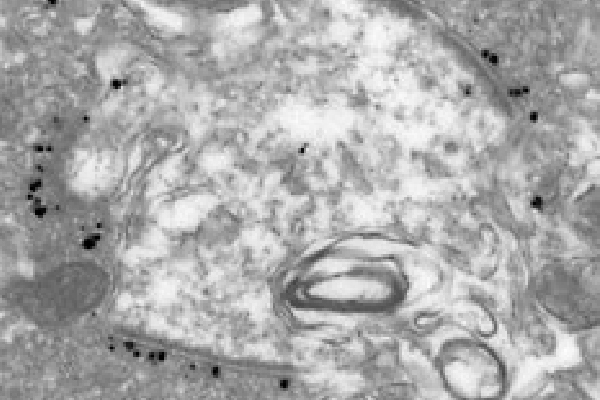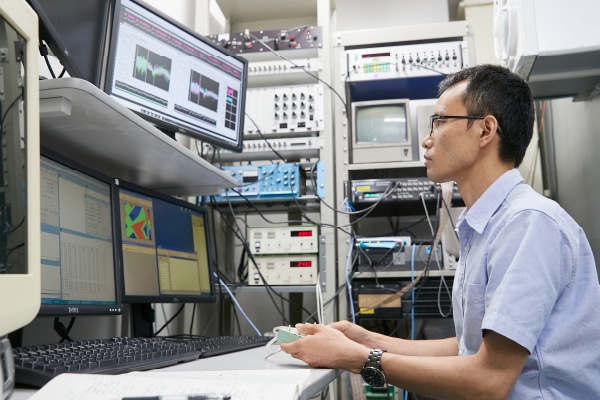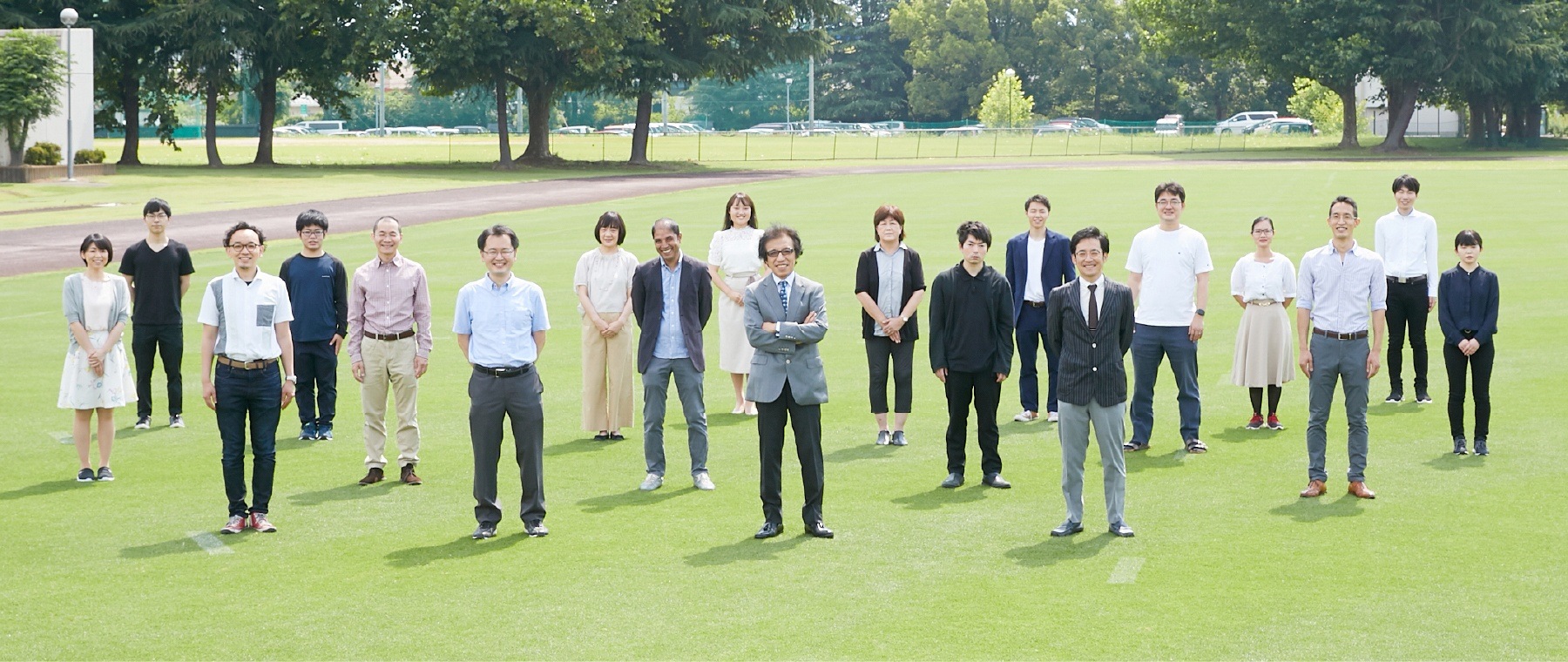
薬理学講座Department of Neuropharmacology
薬理学講座は「グリア細胞研究室」として15年以上のグリア研究の歴史を有します。特に各種脳・眼疾患、例えば脳卒中、てんかん、神経障害性疼痛、うつ病、Alexander病、緑内障等の分子病態におけるグリア細胞の役割を解明しています。また、アレルギー等末梢の免疫細胞、さらに他臓器と脳を繋ぐインターフェースとしてのグリア細胞機能に注目した研究も行っています。山梨GLIAセンターの中では、脳の各種脳研究で世界をリードする研究グループ、アレルギー研究グループとを有機的に結びつけ、全く新しい脳-免疫研究の創成を実現します。また、臨床医学系、コホート研究、生命環境研究、、ワイン研究、教育研究の各グループを「繋ぐ」インターフェースとなり、学際研究を遂行することで新しい研究分野開拓、大きな創発を生みだす役割を果たします。
The Department of Neuropharmacology has a history of more than 15 years as the "Glial research laboratory". In particular, we have been investigating the role of glia, i.e., astrocytes and microglia, in the molecular pathogenesis of various brain and eye diseases, such as stroke, epilepsy, neuropathic pain, depression, Alexander's disease, and glaucoma. Our research also focuses on the function of glial cells as an interface between peripheral immune cells, other organs and the brain. In the Yamanashi GLIA Center, we will organically link the world's leading research groups in the various brain researches and the allergy research groups to create a completely new brain-immunity research. We will also serve as an interface between clinical medicine, cohort research, bioenvironmental research, wine research, and education research groups to carry out interdisciplinary research, develop and generate significant new research fields.
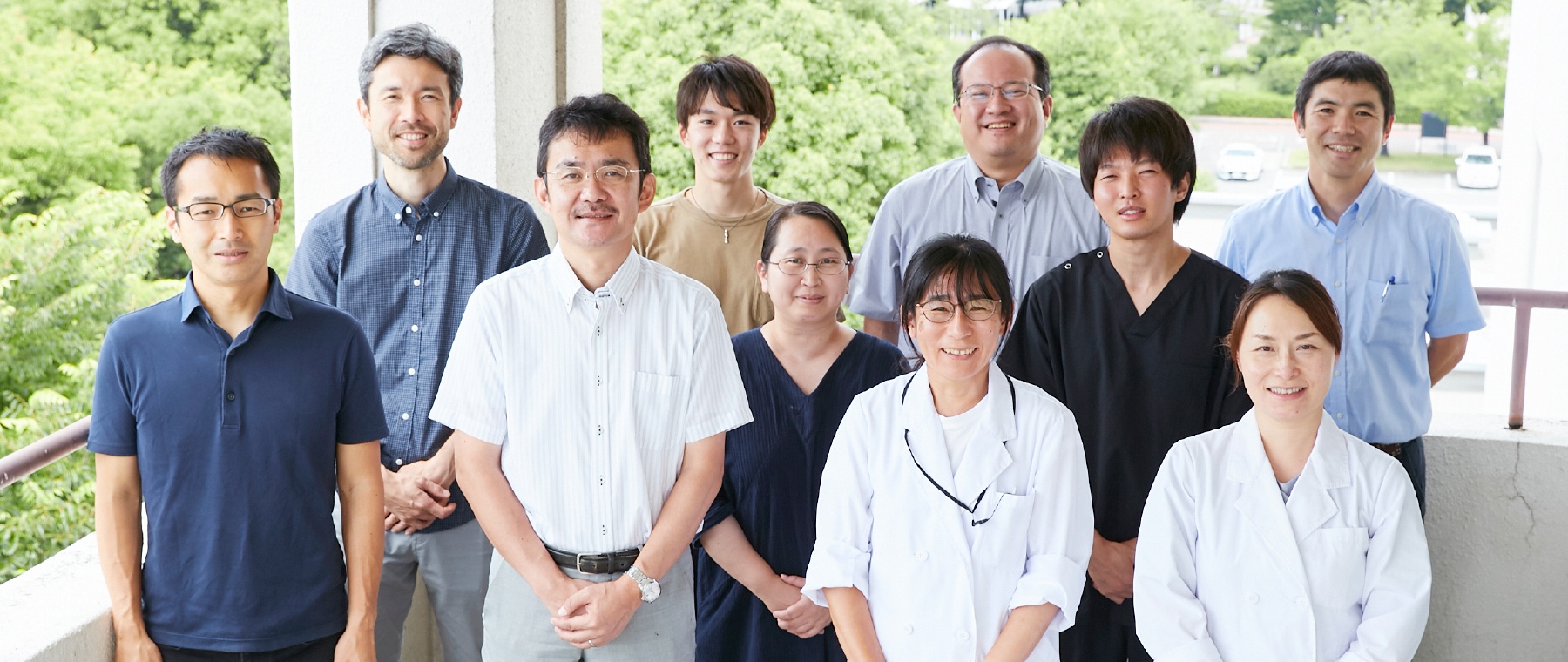
生理学講座神経生理学教室Department of Neurophysiology
ヒトを含む哺乳類は、無限に異なるパターンの外部刺激を受容し、脳の広範囲にわたって蓄えられた記憶とその時々の脳状態に基づいて適切な行動計画を決定して実行しています。これは、大脳感覚運動野や小脳などの各脳領野にある、個別の機能を分担する神経回路による並列分散処理によって行われていますが、その実体、特に脳領野間の連関については多くが謎のままです。私たちは、脳内における感覚運動情報処理および学習メカニズムを明らかにするために、行動中の動物において光学的および電気生理学的手法を用いて研究を進めています。主な研究テーマは、大脳−小脳連関による運動制御・運動学習メカニズムと小脳の高次機能の解明で、電気生理学計測(スパイク記録、パッチクランプ記録)や2光子イメージングなどの機能イメージング法を用いて、認知運動課題実行中のマウス脳活動を計測しています。機能イメージングのためのプローブ開発や新規イメージング手法の開発などにも取り組んでいます。
TMammals, including humans, receive a number of different patterns of external stimuli, and determine and execute an appropriate action based on the memories and the brain state at the time. This is done by parallel and distributed processing by neural circuits that are responsible for individual functions in each brain region, such as the sensory-motor cortex and the cerebellum, but this process, especially the interaction between brain regions, remains elusive. We are investigating the mechanisms of sensory-motor information processing and learning in the brain by using optical and electrophysiological techniques in behaving animals. Our main research theme is to elucidate the mechanisms of motor control and motor learning through cerebro-cerebellar coupling and higher-order functions of the cerebellum, and we record neuronal activity of the mouse cognitive/motor tasks by using functional microscopic imaging techniques such as two-photon imaging and by electrophysiological recordings (spike recordings and patch-clamp recordings). We develops functional probes for imaging and novel imaging methods.
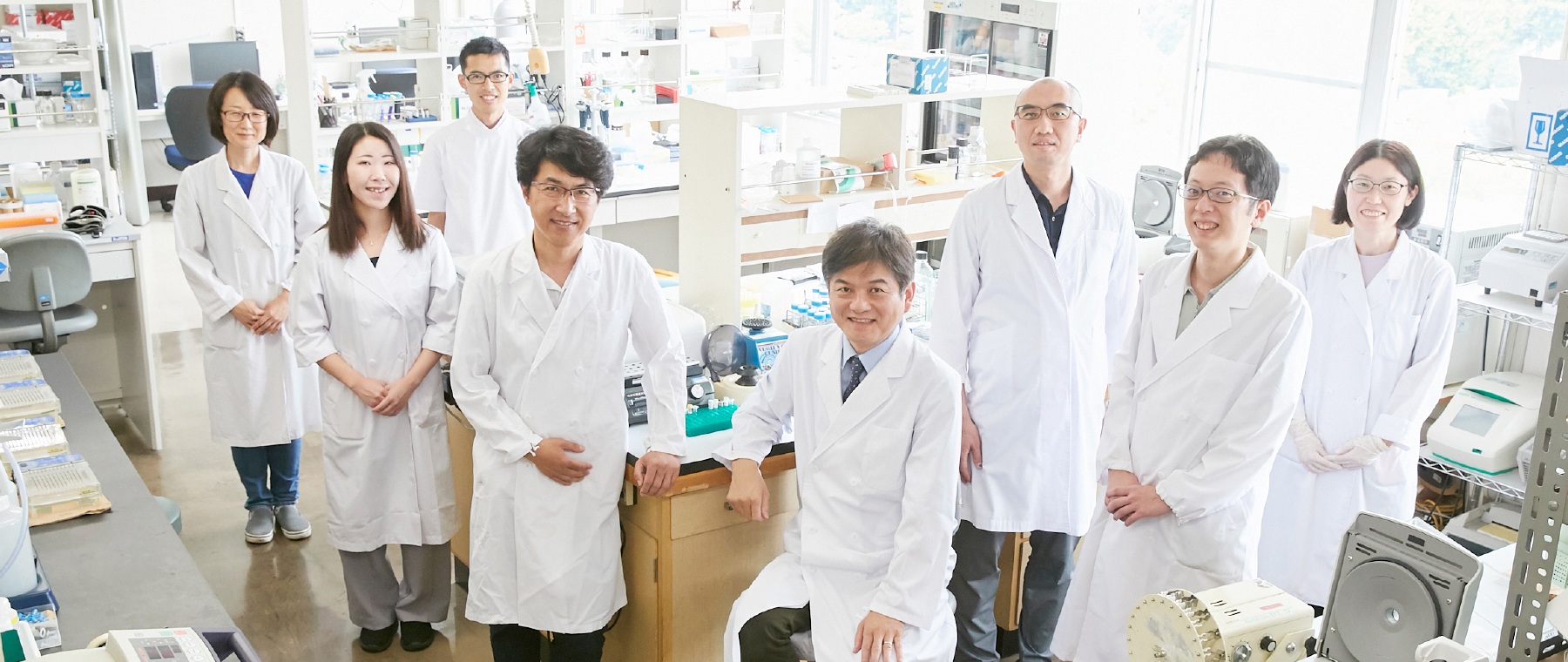
生化学講座第一教室Department of Biochemistry
学習や記憶・情動形成などの脳高次機能は、複雑な神経回路網の情報伝達によって制御されています。シナプスはこの複雑な神経回路網の基本ユニットであり、シナプスの形成・維持・破綻のメカニズムを明らかにすることは、神経回路網形成の分子基盤の解明に繋がるだけではなく、様々な神経変性疾患発症のメカニズムの理解に大きく寄与すると考えられます。私たちの研究室ではこれまでシナプス前部においてアクティブゾーンと呼ばれる神経伝達物質が放出される領域に注目し、その構成因子の1つであるCASTとELKSの発見および機能解析を通じてシナプス伝達の仕組みの一端を明らかにしてきました。しかし時空間的に厳密に制御されたシナプス伝達、およびシナプス可塑性のメカニズムは依然として多くの謎が残されています。現在私たちの研究室では、蛋白質化学・細胞生物学・分子生物学・マウス行動学・遺伝学などの手法を用いて、シナプス形成のメカニズムを明らかにすべく研究を進めています。そして、これからの神経科学分野の発展に貢献していくとともに、将来的に“病気のサイエンス”を通じて広く社会に貢献することを目指します。
<研究テーマ>
- 神経プレシナプス・アクティブゾーン形成の分子基盤
- 神経終末における新たなシグナル伝達機構の解明
- 神経スパイン形成の細胞・分子メカニズム
- プレシナプスとポストシナプスを繋ぐ細胞接着機構の解明
Neural network, which regulates various brain functions is a series of neural connection at the synapse. Presynaptic active zone (AZ) is the specialized compartment closed to the plasma membrane, where synaptic vesicles dock and fuse to release neurotransmitters. In 1990s to 2000s, the development of molecular biology and biochemistry allowed scientists to identify the composition of the release machinery such as RIM1, Munc13, Bassoon, and CAST/ELKS for the cytomatrix at the AZ (CAZ) proteins. Our research focus is how the CAZ proteins temporally and spatially coordinate the neurotransmitter release. And further, what of dysfunctions in AZ dynamics can cause the brain diseases? We have employed interdisciplinary approaches such as solid biochemistry, cellular biology, genetics, electron microscopy, and electrophysiology to understand the physiological roles of the AZ in health and diseases by using mice as a model animal.
<website>https://www.med.yamanashi.ac.jp/basic/bioche01/en/index.html
免疫学講座Department of Immunology
私達の研究室は、喘息や花粉症、アトピー性皮膚炎、食物アレルギー、アナフィラキシーなどのアレルギー疾患の病態生理を様々な視点からより深いレベルで考察し、 アレルギー疾患の新しい予防や治療法を開発するためのカギとなる基礎的知見を発見することを主たる目標としています。現在、本研究室では、アレルギーと体の中で時間を刻む仕組み(体内時計)との関係について精力的に研究しています(J Allergy Clin Immunol 2011、2014、2016、2018, Allergy 2015、Sci Rep 2017、Front Immunol 2020)。この研究のゴールは体内時計とアレルギーとの関係をより深く解明し、アレルギー疾患の予防や治療法に新しいアプローチを生み出すことです。例えば、睡眠や食事、ストレスなどの日常生活因子を少しだけ変えることで、薬を増やさなくても花粉症の症状を軽減できるかもしれません。このような研究は、世界でも私達がリードするオリジナルな研究です。基礎研究をする醍醐味は、大変なことではありますが、1つの論文でこれまでの世界観を一挙に変えることが可能なことです。そのような大きなゴールを決めたいという志を持ってアレルギー学の進化に寄与したいと思う人は、ぜひ私達の常識を変えるような新しいアレルギー研究を生み出すことに参加してください。
The prevalence of allergic diseases such as asthma, allergic rhinitis, atopic dermatitis, and food allergy has reached “pandemic” proportions in industrialized countries and the costs to public health and the economy are massive and growing. Although we come to understand several major aspects of allergic diseases though extensive scientific efforts during the past ~50 years, there are still significant puzzles in allergic diseases and the development of effective cure for the diseases has been hindered.The research goal in our laboratory is to solve such puzzles, thereby raising new ideas for prevention and treatment of allergic diseases with great impact on medicine. We are currently keen about a puzzle: “How time affects allergy?” Since 2011, we have shown that the internal time keeping system “the circadian clock” plays a key role in the temporal regulation of IgE/mast cell (or basophil)-mediated allergic reaction, and may therefore underlie the circadian pathophysiology of allergic diseases (Nakamura et al. JACI 2011, 2014, 2016, Sci Rep 2019, Nakao A. Allergy 2015, JACI 2018, Front Immunol 2020, Ando et al. Allergy 2015 etc.).Given the strong influence of the circadian clock on allergic diseases, we believe that research on how the time of day impacts allergic reaction which we call “chronoallergology” will provide new insight into previously unknown aspects of the biology of allergies and facilitate novel strategies for prevention and treatment of allergic diseases.
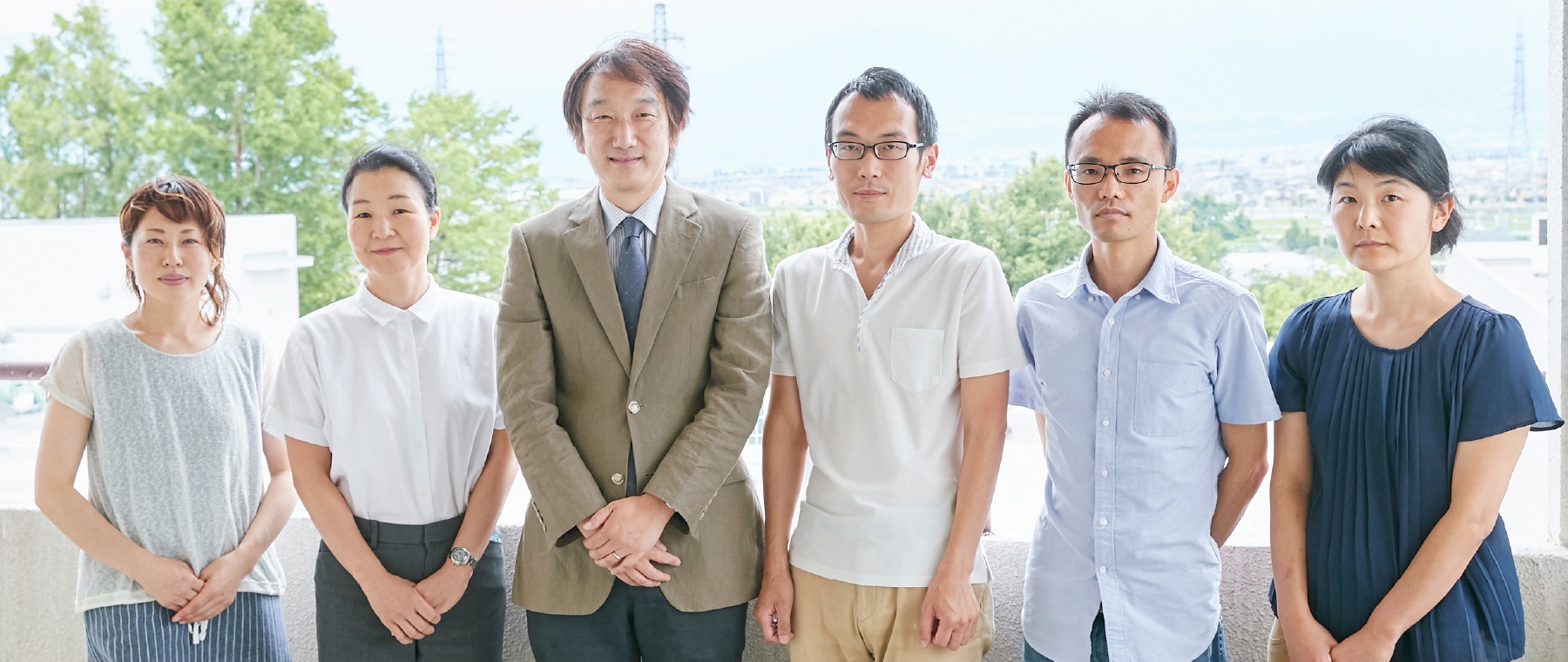
生理学講座統合生理学教室Department of Integrative Physiology
ヒトはどのようにして柔軟に判断をし、多様な選択を行うことができるのでしょうか。同じ感覚入力に対して、取り得る行動の選択肢が多数存在する場合、ヒトは状況に適した選択肢をひとつだけ選びます。このように、複数の選択肢を一つに絞る推論のプロセスを私たちは判断とよんでいます。判断は画一的なものではなく、環境によって変化します。こうした柔軟な判断を、ヒトは当たり前のようにしますが、その神経機構を理解することは簡単ではありません。統合生理学教室では、ヒトと動物を対象としたシステム神経科学研究を推進し、柔軟な判断の神経基盤に迫ろうとしています。ヒトの心理物理学研究や脳波研究では、柔軟な判断の多様なプロセスを明らかにします。霊長類を用いた研究では、電気生理学的手法に最新の光遺伝学や化学遺伝学的手法を組み合わせ、柔軟な判断に関連する神経活動とマクロ神経ネットワークを明らかにします。げっ歯類を用いた研究では、判断に関わる神経細胞を同定し、判断の計算に関わる局所神経回路や分子の情報を取得します。さらに、これらのデータを統一的に説明できる、柔軟な判断の神経回路モデルを構築します。このように、さまざまなアプローチを統合する多様な研究に携わっています。
Department of Integrative Physiology
How do humans make flexible decisions? Decision making is a deliberative process for committing to one of many options. Decisions are usually not fixed, but are rather flexible and dependent on the environment. Humans can make flexible decisions with ease, but the underlying neural mechanisms are still poorly understood.
In our lab, we take a systems neuroscience approach to explore the neural mechanisms underlying flexible decision making. In humans, we use psychophysical experiments and electroencephalogram (EEG) to reveal various processes underlying flexible decision making. In primates, we combine electrophysiology with state-of-the-art optogenetic and chemogenetic approaches to explore the neural activity and networks involved in flexible decision making. In rodents, we aim to understand the local circuits and molecules that are involved in decision computation. Thus we use an integrative approach to understand one of the main mystery of the brain.




